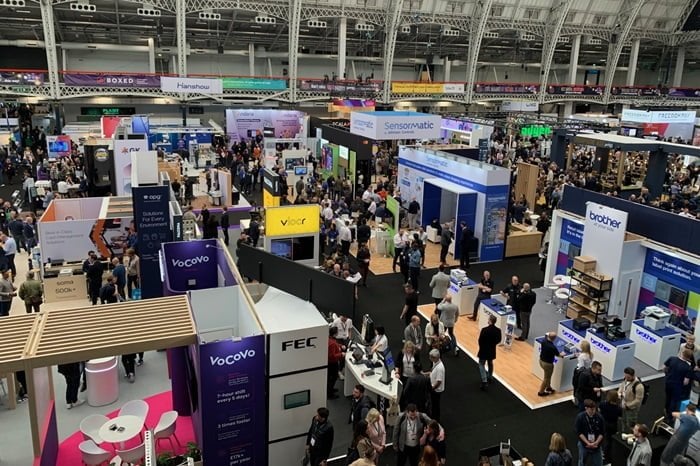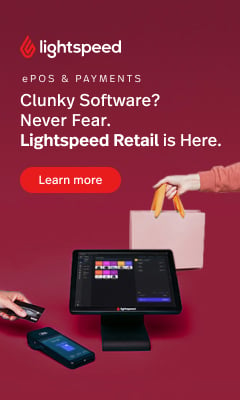Retail Technology Show review – focusing on proven technologies
There was plenty of realism in evidence at the recent Retail Technology Show at London’s Olympia as many retailers revealed their focus was on building-out solutions using proven technologies rather than being distracted by committing heavily to the likes of AI during these times of tough trading.
Indicative of this scenario is Pets at Home that is in the midst of its digital transformation journey, which has of late involved it focusing on delivering a seamless click & collect capability and fulfilling online orders from stores rather than from a central warehouse. Although this is not exactly cutting edge activity the upsides are enormous.
Supply chain overhauls
Joe Whitaker, head of digital operations at Pets at Home, says: “We’re putting significant investment into the supply chain and a new distribution centre (DC) and working hard on omni-channel from a fulfilment perspective. We’ve found customers wanted C&C and previously it would have been done from the DC but it’s inefficient and costly so we set out an objective to address this.”
The pet specialist has been working with OneStock to now offer C&C within one hour – with an average pick time of only 15 minutes – which leverages the physical store assets that Pets at Home has around the country. The service now accounts for 40% of total e-commerce sales, with 97% of orders successfully fulfilled. The partnership has also completed a project involving fulfilment from stores, with up to 300 orders per day being dispatched from some outlets. These two initiatives have helped drive omni-channel revenues up 19% year-on-year, according to Whitaker.
Tried-and-trusted technologies
This focus on using tried-and-trusted technologies and solutions within the supply chain is also recognised by many retailers now working with Dean Frew, president of RFID solutions division at SML, who says a growing number of retailers including Asda, H&M, Tesco and Matalan are leveraging value from their RFID implementations.
“The fastest growth area is in the DCs where RFID is being used to read the items in every case because a single digit percentage of boxes will be inaccurate. It could be 50% of boxes that are not right and contain the wrong goods,” he says.
Once retailers have RFID in their stores then they are looking to then go into the DCs to monitor their incoming stock. “A lot of retailers are starting to tell vendors [suppliers] they will penalise them for wrong cases and only pay for correct ones,” says Frew, adding that this also ultimately helps with the ability of retailers to handle C&C in stores. Without RFID as many as 50% of such orders are cancelled through a lack of visibility of inventory across channels.
Such technology has largely been adopted by fashion retailers to date but this is changing, according to Frew, who says the likes of department stores are looking to place tags onto soft home-ware items, cooking utensils, sporting goods and then lastly fragrances and cosmetics.
Greening the supply chain
The supply chain is very much a focus for department store Harrods that is working hard on its sustainability aspects. It has been working hard on Scope 1 and 2 involving initiatives such as switching to an electric delivery fleet and installing solar panels on the roof of its DC. However, Simon Finch, supply chain director at Harrods, admits 1 and 2 accounts for only 5% of its emissions, with the rest falling within Scope 3.
“As a retailer the biggest contributor to Scope 3 is sourcing, production, upstream transport and the end-use of products. No one can go it alone, you have to collaborate. Our ambition is all about collaborating and driving change through Scope 3. We want to motivate and connect with other luxury goods retailers to work together and make it easier for suppliers. If say with Ralph Lauren all the department stores are asking for different things then it does not help. It’s an opportunity for collaborating,” he explains.
This collaboration also includes technology partners, whose solutions around verification, authentication and provenance are very important. He cites the use of Digital Product Passports (DPPs) as playing their part. This is very much the domain of Andrew Xeni, founder of Nobody’s Child and Fabicus, who has just released the third version of a DPP solution and is working hard to align manufacturers and retailers around common sustainability goals.
Balancing profits with purpose
Collaboration very much helps with the ethical practices at Too Good To Go, which works with retailers to reduce food waste. Sophie Trueman, managing director for UK & Ireland at Too Good To Go, suggests that increasingly for the retail sector it is “not about what you sell, it’s how and why you sell it”.
“Gen Z and Millennials are more likely to purchase from an environmental brand. Social, sustainable, and ethical practices are expected. It’s tough to balance all of this as margins are squeezed but sustainability is becoming a big driver of business. It’s not just a nice to have but a must have. It can be daunting having a purpose and profit but the balancing can be done,” says Trueman.
Grace Wilkinson, head of online last mile & customer service at Co-op Group, says there is an “eco element” to its use of autonomous robots for deliveries in a partnership with Starship Technologies that involves zero emissions. Again, this is a proven technology although its wider roll-out around the UK has been constrained to some extent by local councils have reservations about robots roaming the streets in busy areas.
As a solution running alongside alternative delivery options Wilkinson is positive on the solution: “I believe robots will become a widely offered solution. They can’t work in city centres, it needs to be rural areas. Geography is a key aspect. It’s a complimentary service to other delivery methods.”
Leveraging bricks and mortar
The ability to offer a robot delivery method is helped by the extensive physical network encompassing 2,500 convenience stores from which the Co-op can fulfil orders in the local community. Wilkinson reveals some stores generate as much as 50% of their sales online, especially in places such as the Highlands of Scotland.
“To have online as a service is essential, it gives us the reach. It’s key that on-shelf availability is high or quick commerce would be damaged. It’s also a balance with footfall so we consider the volumes [of online orders] going through these stores. We know the sweet spot, otherwise we might split some of it out to other stores when necessary,” she explains.
Connecting with people through a physical space is vital to the business of Stonegate that operates 4,500 outlets, which includes 3,500 pubs across the UK, and to this end James Metcalfe, marketing director at Stonegate Group, says the company is taking best practice from the retail sector to build out loyalty functions across the business’s different brands that include Slug & Lettuce and Be At One.
He says the company is on a digital transformation journey: “The total footfall across 800 managed pubs is 99 million people every year. These are unique visits and there is a massive opportunity to monetise the database. It’s a path well-trodden by the grocers. The challenge we have is that we were not connecting the dots [on the visits],” says Metcalfe.
Part of the project is to replace the different apps across the business’s various brands and consolidate them into one MiXR app that does not feel like a Stonegate app but combines all the brands and helps the company understand the various customer journeys and can link these to individual customers who visit multiple brands.
Retail media networking
Like many retailers, the company is also building a retail media network involving the roll-out of digital screens into its pubs. “It’s a dynamic concept with hyper-targeted offers personalised to the venues, with all the screens operating independently. It opens up the opportunity to advertise adjacent categories,” says Metcalfe.
Driving such secondary revenue is also an important part of the Curry’s business, which works with NatWest to embed a range of financial services within its general offering of electrical goods and consumer electronics.
John Fabian-Miller, managing director of credit at Curry’s, says: “We’re on a journey to move from [operating] boxes on retail parks to offering services including financial services. It gives people more reasons to be a customer of Curry’s. We offer credit at the point of need and our credit customers are our happiest. We also offer insurance, and savings is an interesting area. Could we enable people to save for technology products?”
Brand collaborations
Fashion brand Percival Menswear has also sought to branch out from its core in order to develop its business and one route for this has been a series of collaborations. These began with Gareth Southgate becoming an ambassador and led into arrangements for clothing ranges in conjunction with a myriad of third-parties including Campari, the Off Menu podcast and Champion sportswear.
Guljeet Samra, chief commercial officer at Percival Menswear, says the primary focus was as a tool to acquire new customers and lots of learnings accrued from the incredible 26 collaborations that were undertaken in a single year.
“You have to be careful as you can dilute your own brand and the customer journey. There’s lots of logistics involved and a lot of effort for a one-off purchase,” she says, adding that the schedule for this year involves a much more modest single collaboration per quarter.
Despite the effort involved Samra says such initiatives do have value and could be used as a stepping stone to doing other things with partner brands: “We did a collaboration with Slazenger that worked well and we have another one planned.”














